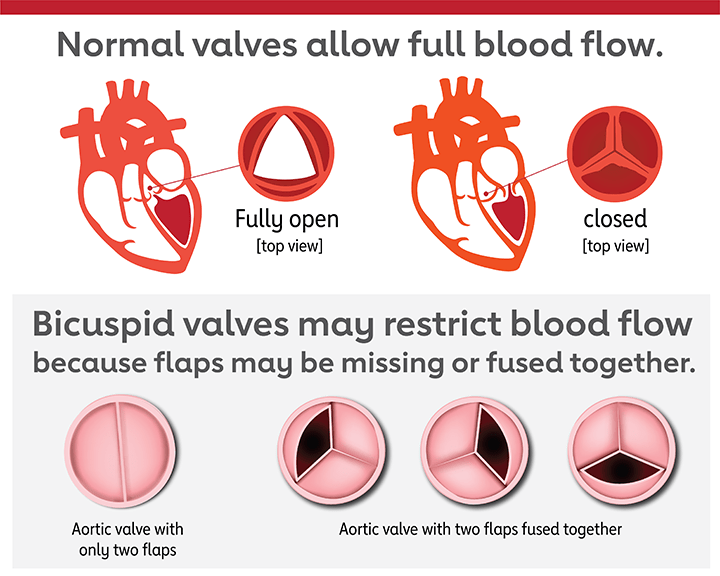Problem: Heart Valve Stenosis
About Valve Stenosis
Stenosis is the term for a valve that is narrowed and doesn’t open properly. The flaps of a valve may thicken, stiffen or fuse together. As a result, the valve cannot fully open. The heart then has to work harder to pump blood through the valve, and the body may suffer from a reduced supply of oxygen.
Causes of Valve Stenosis
All types of heart valve disease are more common with age, although some may be caused by congenital heart defects. For example, a type of malformed aortic valve is a bicuspid aortic valve and is the most common type of congenital heart defect. Instead of having three flaps that open for blood flow, two are fused together. This causes blood to pass through a smaller, restricted opening.

Watch a video explaining a bicuspid valve(link opens in new window).
Learn about the different types of valve stenosis:
Outlook for People with Valve Stenosis
Most valve conditions are very treatable with medications and procedures or surgery. However, medical procedures and surgery have risks that should be discussed with your health care professional. It’s important to weigh your options carefully because untreated heart valve problems can lead to serious, life-threatening conditions.